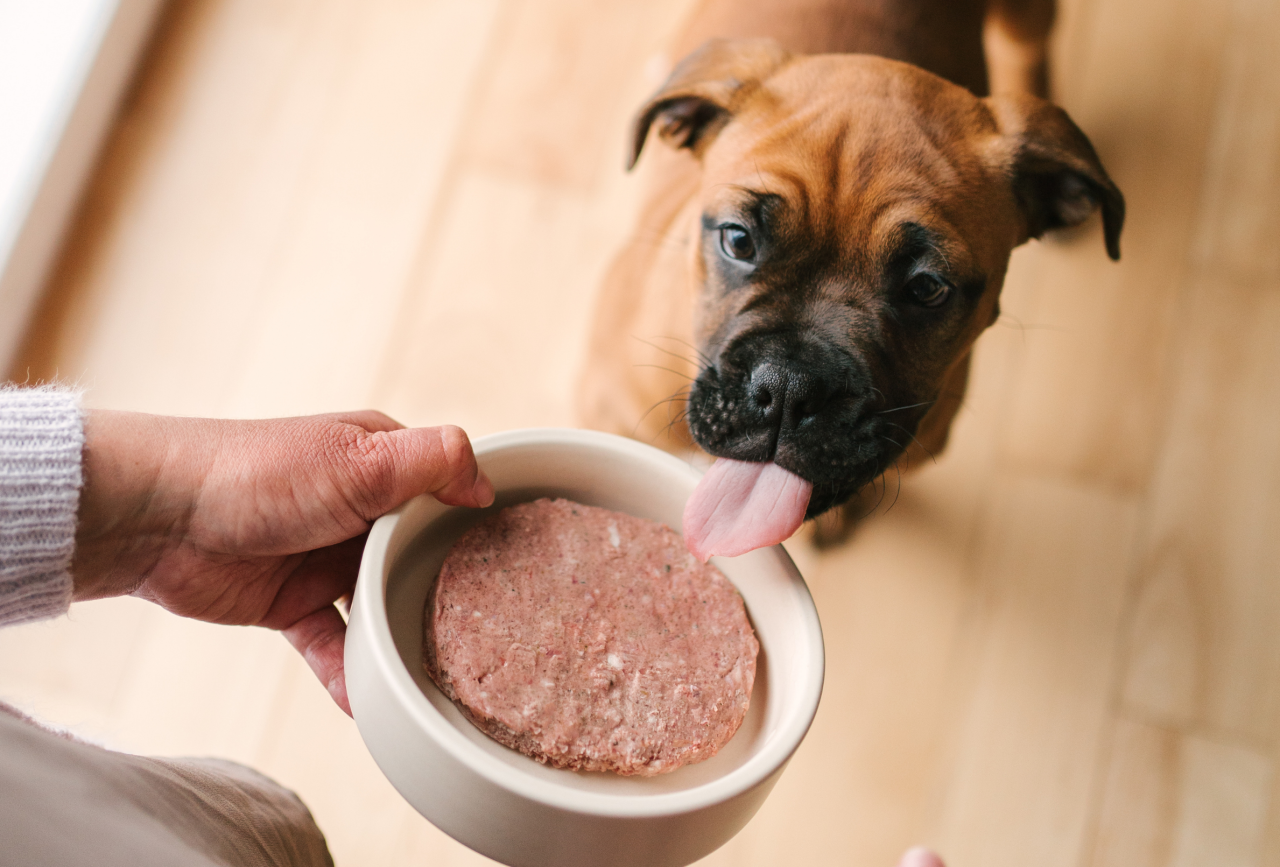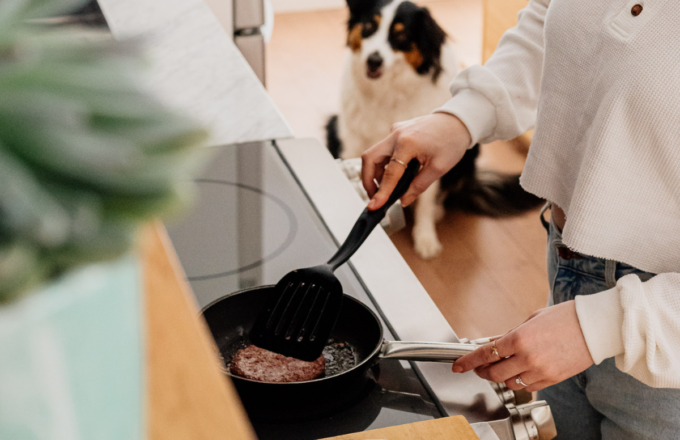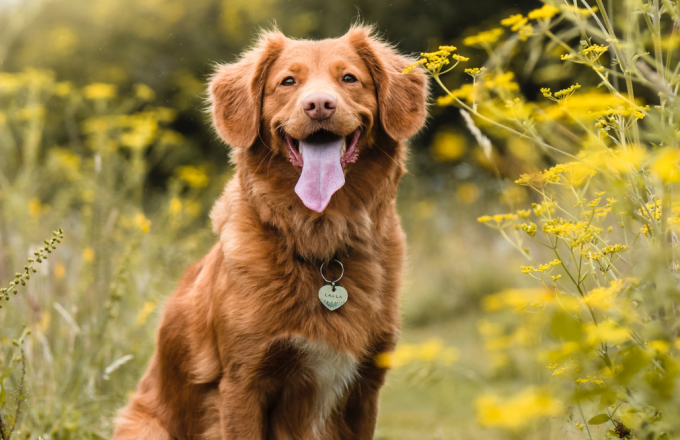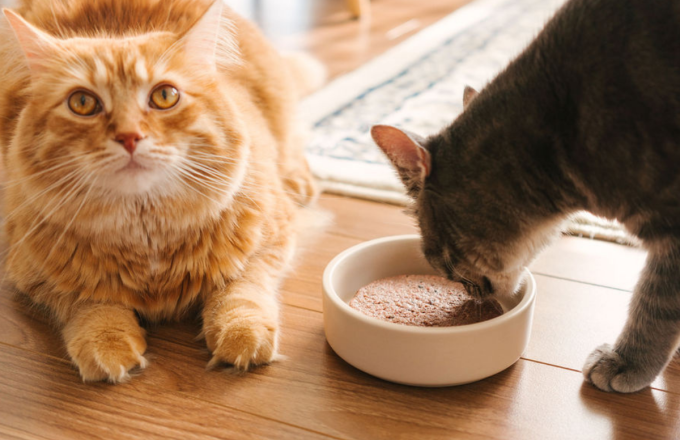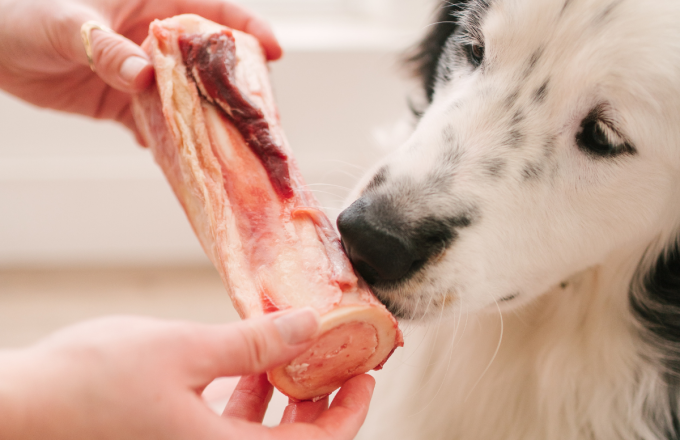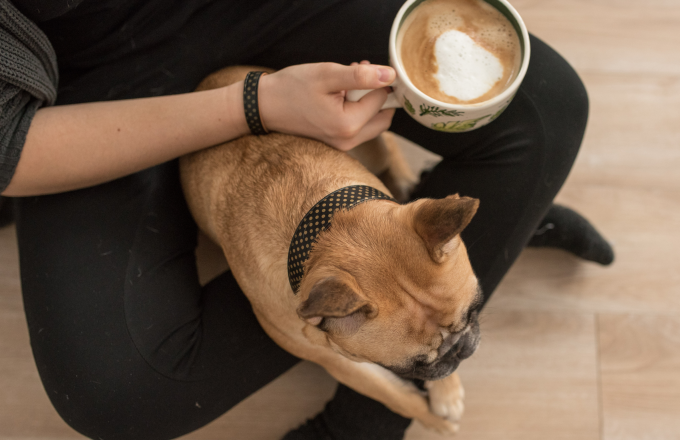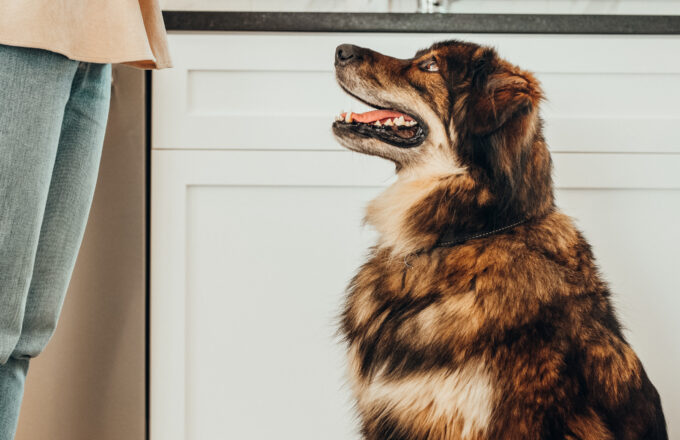Pups & raw food: a winning formula
Puppies grow quickly during the first months of their life. This stage of development is crucial to their growth and demands an appropriate diet. Find out why raw food is the most beneficial diet for a puppy. It can easily be incorporated into the daily life of your newest furry family member.
What is the best diet for a puppy?
Providing your pup with a healthy diet adapted to their system may be the purest form of love you can offer your young canine companion. Listed below, you’ll find the ways in which raw food helps with their health, vitality, and longevity.
A healthy growth
During the first year of their life, puppies are in full development. They need the best possible food to withstand all the rapid changes they’re experiencing. Raw food provides complete, highly digestible protein that contributes to their growth, muscle mass, and brain development.
In addition, the body can better absorb the nutrients in raw food than it can those in dry food, allowing the organs to efficiently obtain necessary nutrients. These support all the major changes your pup will go through as they grow.
A healthy intestinal flora
Raw food for your puppy is full of gut-healthy bacteria, which helps keep the digestive system healthy. A raw diet for puppies will also reduce the number of daily stools along with their odour—a great perk for you!
A softer coat
Puppies that eat raw food develop a rich, shiny, well-pigmented coat. Raw food also supports their nose, ears, and mouth. Thanks to the nutrients in raw food, puppies maintain good oral, nasal, and auditory health.
A better immune system
Thanks to the greater bioavailability of nutrients in fresh meat, your pup’s immune system becomes stronger and more resilient. This helps prevent infections and makes it easier for your pup to ward off diseases.
Improved dental health
Because raw meat contains little to no carbs, there’s less risk of your pup developing tartar or dental health issues as an adult. Your dog will have fresher breath and an overall healthier mouth throughout their life.
Discover Our Recipes for Puppies
When can raw food be introduced?
You can start raw food around 8 to 12 weeks of age, when your puppy comes home. Remember they were likely fed kibble by their breeder, so it’s important to make the transition appropriately.
From kibble to raw: one single step
It’s often easier to introduce a puppy to raw food because of their natural curiosity and because they haven’t yet developed any preferences.
To make the transition safe for your puppy, it’s important not to mix kibble with raw food in the same meal. The digestion time is different for both, which can create digestive problems. We suggest stopping the kibble in the evening and starting an exclusively raw diet the next morning.
Start with one protein
It’s best to start with just one source of protein. Beef, for instance, is an excellent choice for puppies. Being higher in calories, it supports their growth and development.
If there are no symptoms of digestive problems, such as vomiting or diarrhea, after seven to ten days, you can add a second source of protein to their diet, and so on.
If you prepare your dog’s meals yourself, it’s important to know that muscle meat should represent 35-50% of their diet. Top it off with a good balance of calcium and phosphorus via recreational raw bones and other supplements (eggs with shells, etc.).
However, please note that we offer complete and balanced recipes to ensure that your pup receives optimal nutrition. This eliminates the need to weigh, calculate, or portion anything at home.
Discover Our Complete, Ready-To-Serve Meals
The appropriate amount of food
How much should your puppy weigh as an adult? Using this figure, you’ll establish the amount of raw food to give your puppy every day. This figure should reflect 2-3% of their adult weight.
Small breed puppies may need up to 10% of their weight per day in food, especially if they’re very active. While large breed puppies may need 4-8% of their weight per day. Each puppy is different. That’s why it’s important to monitor their growth carefully and adjust their daily portion accordingly.
Our customized food plans help you calculate the right amount of food to offer your puppy.
Receive a Personalized Food Plan
Meal frequency for puppies
Your puppy should eat three small meals a day. We recommend that you follow this pattern until they reach six months, then decrease the frequency to twice a day, and finally to once a day.
Remember that as an adult, the best feeding frequency is the one that best suits your lifestyle. Most dog parents prefer to feed their dog raw only once a day, when they return from work. Others have a more flexible schedule that allows them to feed their dog in the morning and evening.
If you are welcoming a puppy into your home, our canine & feline support team is available to accompany you through your new adventure. You can reach us Monday to Friday from 9am—5pm:
- By email: [email protected]
- By phone: 1 888 855-9622
- Via our website’s online chat
- On social media: Facebook Messenger or Instagram Direct Messenger
We also have a Facebook group where dog parents can discuss raw and natural feeding!

